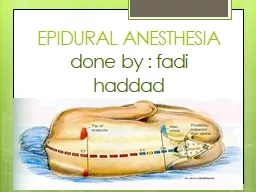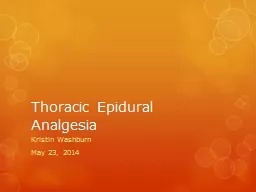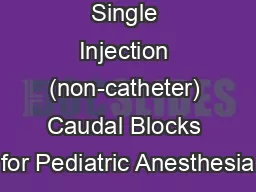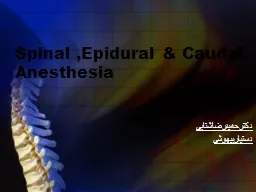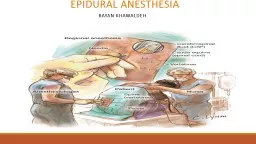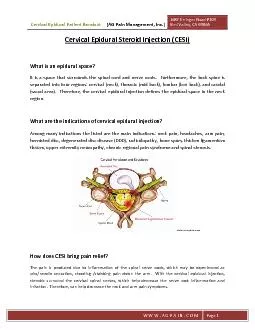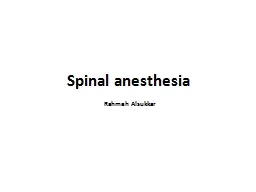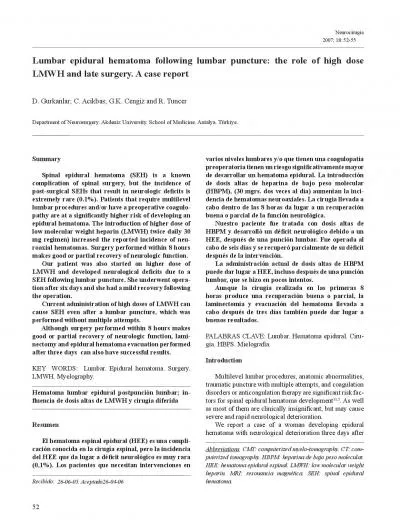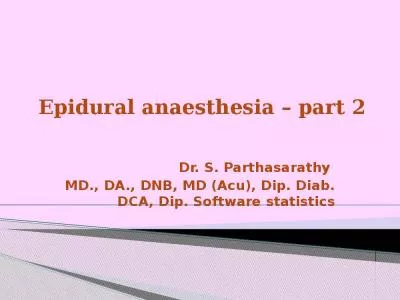PPT-EPIDURAL ANESTHESIA done by :
Author : hazel | Published Date : 2022-02-14
fadi haddad Anatomy Epidural space base of skull foramen magnum to the coccyx sacrococcygeal membrane the peridural space between the
Presentation Embed Code
Download Presentation
Download Presentation The PPT/PDF document "EPIDURAL ANESTHESIA done by :" is the property of its rightful owner. Permission is granted to download and print the materials on this website for personal, non-commercial use only, and to display it on your personal computer provided you do not modify the materials and that you retain all copyright notices contained in the materials. By downloading content from our website, you accept the terms of this agreement.
EPIDURAL ANESTHESIA done by :: Transcript
Download Rules Of Document
"EPIDURAL ANESTHESIA done by :"The content belongs to its owner. You may download and print it for personal use, without modification, and keep all copyright notices. By downloading, you agree to these terms.
Related Documents

